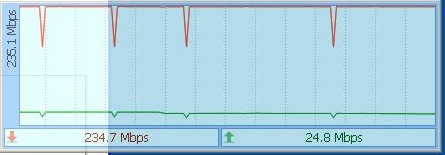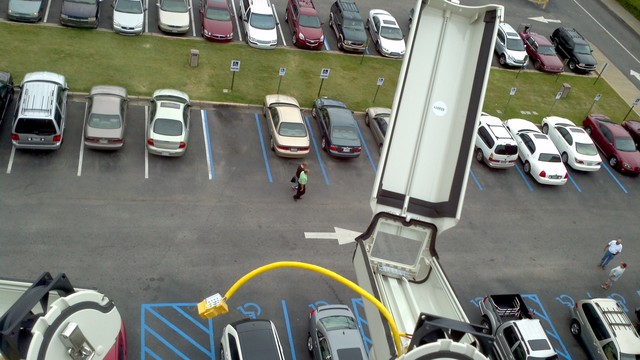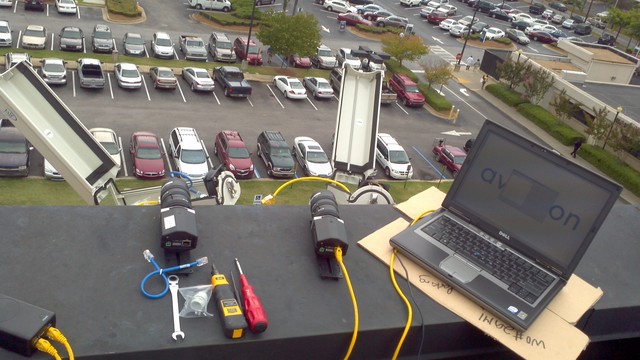

ssmith10pn
-
Content Count
1,553 -
Joined
-
Last visited
Posts posted by ssmith10pn
-
-
Cool!
Score one for the good guys.
Is that IR Illumination or Ambient light?
-
Your right. I'm an idiot!
I thought it was a new type of IR Illumination.
-
I'm late to the party but I'm considering a solid state drive for my laptop because I have crashed 2 drives from banging them around on a ladder.
-
I copied this from the cut sheet:
RAYLUX Fusion is a range of high performance
White-Light illuminators designed specifically for
low voltage installations. The illuminators provide
class leading performance, long life and ultra low
maintenance. They incorporate Raytec’s latest
surface mount PLATINUM LED’s to deliver excellent
night-time pictures with improved optical output and
outstanding reliability.
The RAYLUX Fusion series has integrated
Command and Control™ circuitry. Installation is quick
and easy, requiring only a 12/24V AC/DC input.
Each unit is fitted with Active LED Life Control to
carefully control LED output, delivering consistent
illumination power and a projected working life of 10
years.
RAYLUX Fusion illuminators are supplied
complete with bracket. Control features on the
RAYLUX Fusion include adjustable power output,
photocell and photocell adjust. RAYLUX 25 Fusion
is suitable for all low light installations up to17 metres (56ft).
http://www.rayteccctv.com/products-category.aspx?categoryid=2
-
Consider this,
You want us to suggest where to put cameras from your photos correct?
If you had never stepped on that property and only had those photos to go by could you?
The photos only paint a small piece of the picture. First off the photos are shot from where the camera will be looking instead of what the camera will be looking at.
I have no idea where a camera needs to be placed unless I'm standing where the camera will be looking at what the camera would see. Make any sense?
Also, I have no idea of your skillset of fishing wire nor have I been in your attic to know what is accessible and what is not.
-
Not sure I understand the difference. I see Ray Tech and others offer conventional 850nm IR and "White Light" Illumination.
Is the white light visible?
-
That's a multi faceted question.
If the network has a 10gig backbone and it's all layer 3 switches with QOS and VLANs the IP camera System isn't even a blip on the radar.
-
I'd like to stay around the $100 ea. range.LMFAO!!! " title="Applause" /> " title="Applause" />
-
the way i read it they want 5mp fixed cameras and HD (720p) PTZ cameras.
-
Can anyone point me in the direction of a camera that has good day and night capability at at least 720p? The cameras for the garage would need to be good night vision as I doubt any theives would turn the lights on while rooting around in there.
-
Hey Tom what is the viewing size difference from a ip cam to analog?I thought lets say a 2.8mm lense is just that no matter what the camera?Viewing size is the same. Pixel density is the difference.
-
It's possible that IE's security settings are blocking a plug in install.
Go to IE tools, internet options, security tab.
Click on trusted zones. turn the security all the way down for trusted zones, click on sites and add that IP to the trusted zone.
-
-
Anyone have an idea of who is the OEM on these?
Trying to help a friend out that painted him self in a corner for his first IP camera job and found out his NVR solution won't support these cameras.
http://www.intellinet-network.com/en-US/products/9028-nfd30-network-dome-camera
He has 30 of these installed and needs a NVR solution.
-
-
Personally, I don't find it difficult at all to terminate with an RJ45 plug... YMMV. I suppose if you can't remember your T-568x color codes, it's handy to have the keystones as they usually have the colors marked on the terminals.
I can terminate an RJ-45 plug that'll pass any test in about 30 seconds. It's not that it's a *problem* for me to do them, but it IS bad form. Your backbone cable should be solid-core, which is intended to be secured properly and not moved/flexed. An RJ-45 plug on the end of a solid-core cable violates this concept (even though I realize it is hardly ever likely to be moved/flexed after install). But the other issue is that most people don't realize that RJ-45 ends are not "universal", there are different ones for solid and stranded cables, and even across different brands of cable they don't all work 100% reliably.
This is sort of the equivalent to some of the hack 110V wiring we've all probably come across. There is more to doing it right than just making a good electrical connection. You want the termination to be clean, neat, serviceable, and also conforming to standard best practices. Field-crimped RJ-45's are generally none of the above.
JMHO.
Very well said.
-
I've actually had MORE problems with keystones than with simply terminating the wire myself (including a particular toolless keystone design that let the ends of the wires touch, thus feeding full PoE power into the camera's data pins, frying the camera).If I do need to use a keystone in a housing, I'll just use a pre-made 12"-or-so patch cable from there to the camera. At the head end, I'll usually try to bring everything into a patchbay, although that's not always the optimal solution either.
Personally, I don't find it difficult at all to terminate with an RJ45 plug... YMMV. I suppose if you can't remember your T-568x color codes, it's handy to have the keystones as they usually have the colors marked on the terminals.
There are plug/tool systems that make it easier:

(Combined with a special crimper that has a cutting blade to chop the ends off... and obviously this sample doesn't follow any T-568x spec!)
I have used some of those that the wire goes all the way through the jack and then gets cut off in the crimping process. Problem is certain types of network ports have metal in the back and those cut wires will short out.
I have no problem making RJ45 terminations but they are not the proper way to certify a channel under 568 standards. Horizontal cabling standards require solid cable as the permanent link with stranded patch cables at each end factory terminated and certified.
fortunately or unfortunately I came from the communication cabling industry so I was required to do things the right way.
-
Amen.
And now Panduit has come out with some stuff that doesn't require a punch down tool and you could teach a monkey to do it.
-
Guess your computer only accepts CIF images
That was funny though.
-
Is the top image the only one that's not cropped?
-
Have you called UTC? It will depend on which version you're using.Yes I talked to them and they told me I have to buy it. I think that's total BS. The license is on a USB key and he has that.
I think the guy thought I was asking for Topaz Server.
The server is running fine with all 10 ACURT4s connected to it.
-
Yes a Keystone jack. I try not to ever do field terminations of RJ45s unless I have no choice.
I punch down a keystone jack and use a factory terminated patch cable from the jack to the camera.
-
I'm stealing that image. I think I just peed my pants from laughing so hard.
-
I was looking at there product sheet and assumed the A32N was the dome version of the 732 yes?
I'm going to check another source because the quote I just got was way too high for a 2mp camera.




Camera Placement at my house? How would you guys cover it?
in IP/Megapixel Cameras and Software Solutions
Posted
I don't do much residential but ascetically I would want domes under the eves (Soffet).
It's hard to tell in the pictures if your soffet is level with the ground or is it the same as the roof pitch.